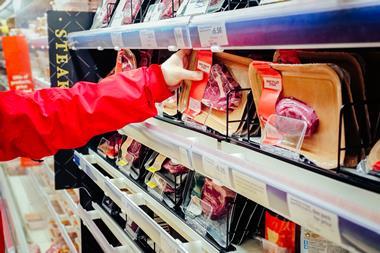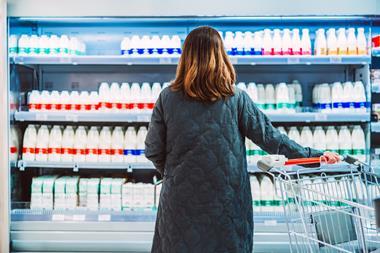Brussels expecting new member states to become importers not exporters
Cheese outlook buoyant
The prospects for the European dairy markets for the rest of this decade are looking more favourable than they have for some years, according to the latest annual review of the EU Commission.
In the next seven years, milk output is expected to be stable, apart from small quota increases after 2005, and with more milk coming from fewer cows. With cheese, consumption is expected to increase by 7% or about 500,000 tonnes, most of which will come from domestic output.
The increasing use of milk for cheese (and for growing fresh product consumption) will lead to a decline in butter and skim powder production, butter by 6% or 100,000 tonnes and SMP by 8% or 160,000 tonnes.
This will remove any serious risk of these two products being over produced and creating surplus public stocks.
In simple terms, this means that the EU dairy markets should, looking ahead, be in better balance than in the last 20 years.
At the same time, the Commission disagrees with those who expect the expansion of the EU to include 10 more members to lead to a flood of cheap dairy products and a re-emergence of surpluses. In fact the Commission expects milk output to drop in total in the new member states by more than 9% by 2009 while their consumption of milk and dairy products rises by 11% in milk equivalent terms.
On this basis the new members in eastern Europe, who are collectively net exporters of milk and milk products at present, will, by 2009, become net importers.
{{CANNED GOODS }}
Close menu
- Home
- Retail & Wholesale
-
Products & Suppliers
- Back to parent navigation item
- Products & Suppliers
-
Product Categories:
- Back to parent navigation item
- Product Categories:
- Alcoholic drinks
- Bakery
- Cereals & breakfast
- Cheese
- Chicken & poultry
- Chocolate
- Confectionery
- Crisps, nuts & snacks
- Dairy
- Fish
- Fresh produce
- Frozen
- Household
- Meat
- Own Label
- Sauces & condiments
- Seasonal
- Soft drinks
- Vaping
- Vegan & plant-based
- World foods
- Suppliers
- People
- Reports & Data
-
Topics A-Z
- Back to parent navigation item
- Topics A-Z
-
Popular topics:
- Back to parent navigation item
- Popular topics:
- Cost of living crisis
- Crime
- Deposit Return Schemes
- Finance
- Government & Regulation
- Health
- Inflation
- Loyalty
- Marketing
- Mergers & Acquisitions
- New Product Development
- Sourcing
- Supply chain
- Sustainability & environment
- Technology
- Ultra Processed Foods
- Vaping
- A-Z all topics
- Content by type:
- Events
- Ask iA (beta)
- Subscribe now
Sign in to comment on this article
Not logged in before? Register for FREE guest access today.
You will be able to:
- Read more stories
- Receive daily newsletters
- Comment on stories
Advert



















No comments yet